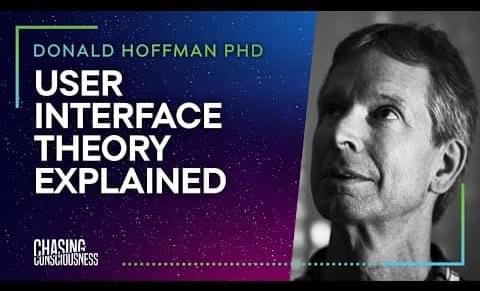Oct 11, 2022
#29 Don Hoffman PHD — USER INTERFACE THEORY EXPLAINED
Posted by Dan Breeden in categories: computing, employment, mathematics, neuroscience, quantum physics, virtual reality
In this episode we explore a User Interface Theory of reality. Since the invention of the computer virtual reality theories have been gaining in popularity, often to explain some difficulties around the hard problem of consciousness (See Episode #1 with Sue Blackmore to get a full analysis of the problem of how subjective experiences might emerge out of our brain neurology); but also to explain other non-local anomalies coming out of physics and psychology, like ‘quantum entanglement’ or ‘out of body experiences’. Do check the devoted episodes #4 and #28 respectively on those two phenomena for a full breakdown.
As you will hear today the vast majority of cognitive scientists believe consciousness is an emergent phenomena from matter, and that virtual reality theories are science fiction or ‘Woowoo’ and new age. One of this podcasts jobs is to look at some of these Woowoo claims and separate the wheat from the chaff, so the open minded among us can find the threshold beyond which evidence based thinking, no matter how contrary to the consensus can be considered and separated from wishful thinking.
So you can imagine my joy when a hugely respected cognitive scientist and User Interface theorist, who can cut through the polemic and orthodoxy with calm, respectful, evidence based argumentation, agreed to come on the show, the one and only Donald D Hoffman.
Hoffman is a full professor of cognitive science at the University of California, Irvine, where he studies consciousness, visual perception and evolutionary psychology using mathematical models and psychophysical experiments. His research subjects include facial attractiveness, the recognition of shape, the perception of motion and colour, the evolution of perception, and the mind-body problem. So he is perfectly placed to comment on how we interpret reality.
Continue reading “#29 Don Hoffman PHD — USER INTERFACE THEORY EXPLAINED” »

















